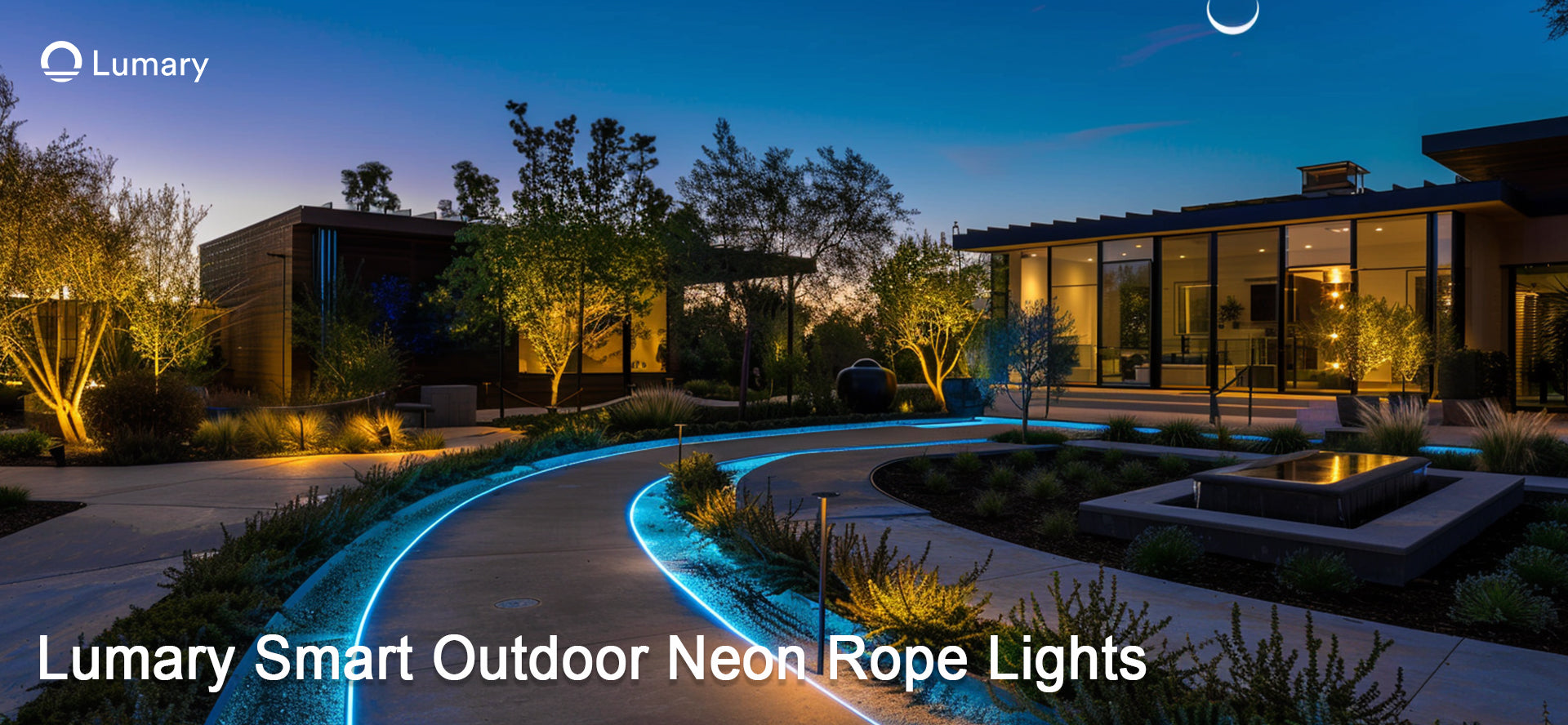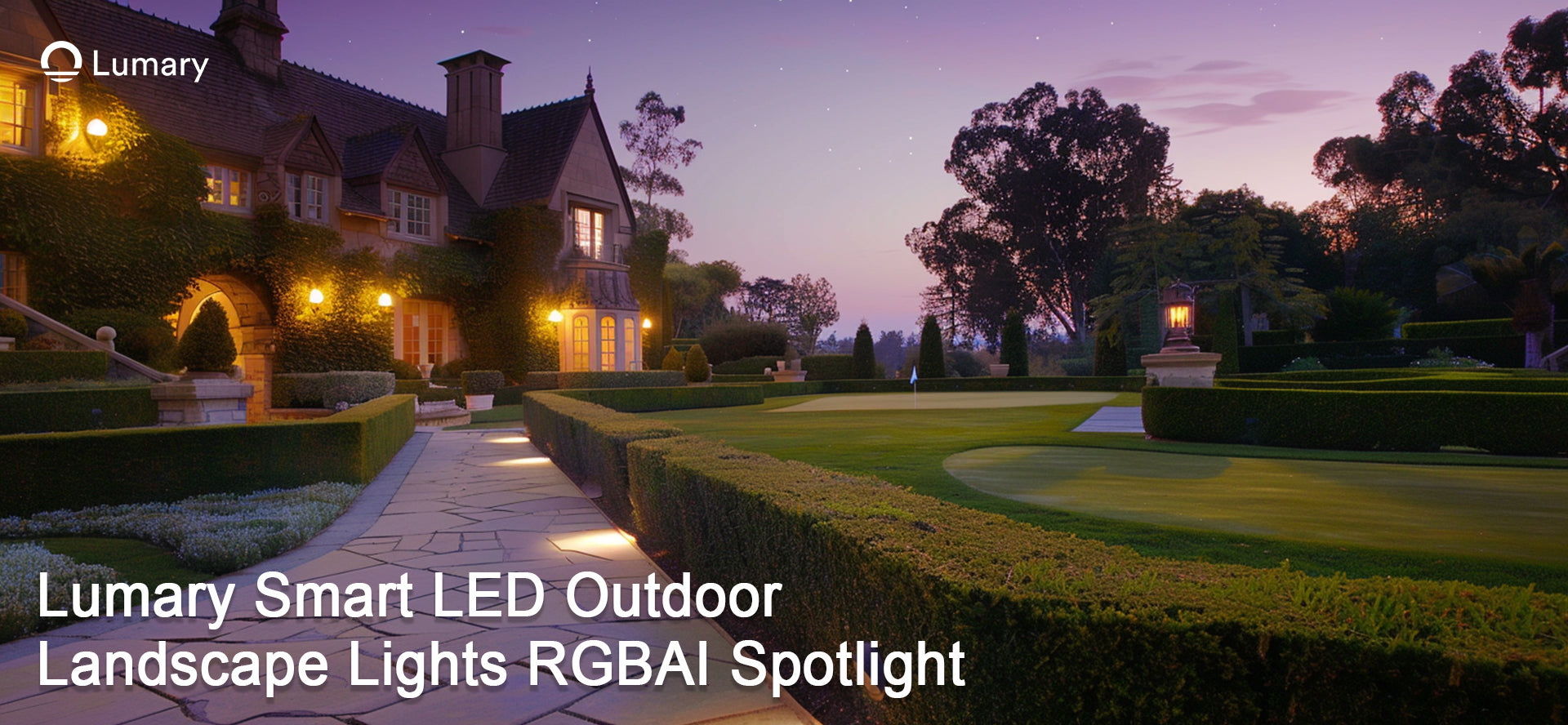Outdoor yard lights do more than just light up spaces. They make your home safer and more welcoming. Whether you’re having a backyard party or relaxing outside, good lighting changes your outdoor areas. It shows off your home’s beauty and helps you walk on paths and patios easily.

Key Takeaways
-
Think about why you need outdoor lights. Focus on safety, mood, and how useful they are to pick the best kind.
-
Pick lights that fit your yard's size and layout. Pathway lights help guests find their way and show off cool spots.
-
Go for energy-saving lights like LED or solar ones. They cost less and are good for the planet.
Know What You Need from Outdoor Lights
Why Use Outdoor Yard Lights (Safety, Mood, Usefulness)
Think about why you need outdoor lights before buying them. Do you want to make your home safer, create a cozy mood, or make your yard more useful? For safety, bright lights near doors or motion-sensor lights can scare off intruders. If you want a relaxing mood, pick soft lights with warm colors. For usefulness, choose lights for paths or patios to brighten those areas. Knowing your reason will help you pick the right lights.
Lighting Pathways, Patios, and Driveways Properly
Good lighting makes outdoor spaces safe and welcoming. Pathways need lights spaced evenly to prevent tripping. Patios do well with wall or overhead lights to brighten the area. Driveways need strong lights to help you park and move safely. Walk around your yard at night to find dark spots. This will show you where lights are needed most.
Choosing Lights for Yard Size and Shape
Your yard’s size and shape affect your lighting choices. A small yard might need just a few lights, but a big yard may need many. Think about the shape too. Are there trees, steps, or special spots to highlight? Use lights to show off these features. For example, pathway lights can guide visitors and make your yard look great.
Explore Outdoor Lighting Styles and Finishes
Popular Styles for Outdoor Light Fixtures (Traditional, Modern, Farmhouse)
Outdoor lights come in many styles to match your taste. Traditional lights often look like lanterns with fancy details. They use warm colors like bronze or brass. These are great for classic or old-fashioned homes. Modern lights are simple with clean shapes and lines. They use materials like stainless steel or black finishes for a sleek look. If you like a cozy, country feel, farmhouse lights are perfect. They may have wood parts, worn finishes, or industrial designs. Picking the right style makes your outdoor lights fit your home perfectly.
Choosing Finishes and Materials for a Cohesive Look
The finish and material of your lights matter a lot. Match them with other things in your yard, like fences or furniture. For example, black lights go well with black metal furniture. Strong materials like aluminum or stainless steel last long and resist weather. If you live near the ocean, pick lights with a special coating to stop rust. These small choices make your lights blend nicely with your yard.
Blending Lighting with Your Home’s Architecture
Your lights should match your home’s design. For colonial homes, lantern-style lights add charm. Modern homes look great with simple, geometric lights. Farmhouse homes pair well with rustic lights in warm colors. Walk around your yard and imagine how the lights will look. Use lights to show off special features like columns or arches. When your lights match your home, everything looks neat and welcoming.
Pick Energy-Saving Outdoor Light Fixtures

Why Use LED and Solar Lights
Energy-saving lights are smart for your yard. LED lights use less power and last longer than regular bulbs. This means you save money on energy and bulb replacements. They also give bright, steady light, which is great for outdoors.
Solar lights save even more energy. They charge with sunlight during the day and light up at night. You don’t need wires or extra electricity. Solar wall lights work well in places where cables are hard to install. They’re also good for the planet by lowering your carbon footprint.
Keeping Lights Bright and Efficient
Energy-saving lights can still be bright. LEDs come in different brightness levels to fit your needs. Softer lights are good for paths, while patios need brighter ones. Many solar lights let you adjust how bright they are. Choose lights with dimming features for special events or everyday use.
Follow Local Rules for Outdoor Lights
Check local rules before adding outdoor lights. Some places limit how bright lights can be or what styles are allowed. For example, some neighborhoods may not allow certain solar lights or require specific designs. Knowing the rules helps you avoid problems and keeps your yard looking nice.
Evaluate Durability and Weather Resistance
Wet-Rated vs. Damp-Rated Outdoor Light Fixtures
Outdoor lights often have labels like "wet-rated" or "damp-rated." These show how well they handle water. Wet-rated lights can handle rain, snow, or sprinklers directly. They are great for open areas like patios or pathways. Damp-rated lights work better in covered spots. Use them on porches or gazebos where rain is less likely. Always check the rating to make sure your lights last in your yard.
Best Materials for Different Climates (Including Coastal Areas)
The material of your lights affects how long they last. Aluminum and stainless steel are good for most places. They resist rust and damage well. Near the coast, salty air can harm metals. Choose lights with special coatings or marine-grade materials to stop rust. In very hot or cold areas, pick UV-resistant or weatherproof lights. This keeps your lights working well in any weather.
Maintaining Outdoor Yard Lights for Longevity
Taking care of outdoor lights is easy. Clean them often to remove dirt and dust. Use a soft cloth and mild soap to wipe them. Check for loose screws or broken wires after storms. For solar lights, keep the panels clean so they charge well. Simple care keeps your lights bright and working for years.
Plan Your Outdoor Lighting Layout
Layering Outdoor Lighting for Balanced Illumination
Using layers of light makes your yard look great. Combine different types of lights for balance. Pathway lights brighten walkways. Wall lights work well for patios. Spotlights can highlight trees or statues. Mixing lights keeps areas from being too dark or too bright. Think of it like adding layers to a painting. Each light adds depth and makes your yard stand out.
Tip: Warm lights make seating areas cozy. Cool lights work better for driveways.
Using Multiple Fixtures to Avoid Dark Spots
Dark spots can feel unsafe and unwelcoming. Fix this by spreading lights evenly. Solar lights are good for pathways and steps. Landscape lights brighten flower beds or bushes. Large yards need grouped lights to cover more space. Walk around at night to find dark areas. Adjust your lights to fill those gaps.
Highlighting Landscaping and Architectural Features
Show off special parts of your yard with lights. Use landscape lights for trees, fountains, or gardens. Spotlights are great for tall trees. Floodlights brighten big areas like walls. Uplighting columns or arches adds drama to your home. Solar lights are easy to install and eco-friendly. Highlighting these features makes your yard unique and charming.
Budget-Friendly Outdoor Lighting Options
Setting a Realistic Budget for Outdoor Yard Lights
Make a budget before buying outdoor lights. Count how many lights you need. Think about where they will go in your yard. Small yards need fewer lights, but big yards need more. Decide how much money you can spend on each light. Remember to add installation costs if you hire help. Planning ahead stops you from spending too much. You can still get good lighting without overspending.
DIY vs. Professional Installation: Pros and Cons
You can install outdoor lights yourself or hire someone. DIY saves money and lets you control the setup. Solar lights are simple to install without special tools. If wiring or a tricky layout is needed, hire a pro. Professionals make sure everything is safe and follows rules. Compare the costs and benefits of both choices. Pick the option that fits your needs best.
Affordable and High-Quality Outdoor Light Fixtures (e.g., Lumary Smart Retaining Wall Light)
Good outdoor lights don’t have to cost a lot. The Lumary Smart Retaining Wall Light is a great choice. It’s affordable and has cool features like adjustable brightness. You can pick colors and control it with an app or voice. These lights are made of strong aluminum and resist water. They work well in bad weather. Use them for paths, steps, or walls. These lights add style and are budget-friendly for your yard.
Picking the best outdoor lights can change your yard. First, know why you need lights. Consider safety, mood, and usefulness. Look for styles that fit your house and pick strong, energy-saving lights. A good lighting plan makes your yard safer and prettier. The Lumary Smart Retaining Wall Light is a great option to try.
FAQ
How can I pick the right brightness for outdoor lights?
Think about the purpose of the light. Pathways need soft, dim lights. Patios and driveways need brighter lights for better visibility. Try different brightness levels to see what works best.
Can I set up outdoor lights by myself?
Yes, you can install solar or low-voltage lights easily. These don’t need special tools or skills. For tricky wiring, hire a professional to ensure safety and proper setup.
How should I take care of outdoor lights?
Clean your lights often to remove dirt and dust. After storms, check for loose parts or damage. For solar lights, keep the panels clean so they work well.

















